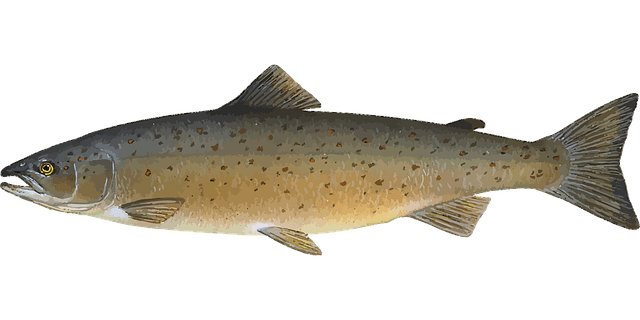
With the advent and popularity of Omega-3 fatty acids, salmon is beginning to occupy an important place among the ingredients used in dog foods. Manufacturers are marketing salmon as an excellent and highly digestible source of protein in addition to being rich in Omega-3 fatty acid.
Humans tend to anthropomorphize (treat their pets as humans), and this phenomenon can be seen, especially in food.
The benefits of Omega-3s, present in large quantities in medium-depth, cool-water fish, have been recognized for years, and salmon has been in increasing demand, in addition to the capsules rich in this type of oil, which are beneficial in the control of cholesterol and triglycerides.
Dogs have not escaped this trend, which, fortunately, if handled appropriately seems to provide an excellent source of protein.
In this article we will not deal with the subject of salmon poisoning, whoever wants to delve deeper into the subject can visit my personal library, where you will also find topics related to this fish as a source of high quality protein.
There are different ways of presenting salmon, from pure flesh – which is what I use when I make homemade salmon diets for some patients with food allergies – to flour and hydrolyzed salmon, the latter used to impart flavor and in can be used in hypoallergenic diets.
There are different types of salmon: King, Red, Coho, but all of them, as far as I know, go through the same processing processes. They can be ground, including the bone, and a diet rich in calcium is obtained.
In addition to this presentation with bones and spine, it is also produced industrially in “deboned” form, using special machines where only the soft material, the meat and fat, is obtained. Afterwards, blocks are formed and frozen.
The pet food industry uses the latter source for extruded food such as pellets and kibble, etc.
Omega-3 fatty acids
The Omega-3 oil present in salmon is very rich in this type of fatty acids; more than 30% are long-chain acids, eicosapentaenoic acid and docosahexaenoic acid, the well-known EPA and DHA.
These Omega-3s have shown many properties, most commonly used in dog and cat clinics to help improve skin and coat quality, as well as to combat allergy problems.
But its benefits have also been seen in treating arthritic and kidney problems, as well as its beneficial effects in cardiac problems (Freeman LM. J. Smal Anim Pract 2010 Sep; 51(9):462-70)
Protein source
There is no doubt that the dog is an opportunistic carnivore that, if it could, would feed only on sources rich in animal protein and fat.
Salmon fulfills these requirements. On a dry basis, it has high levels of crude protein (91.8%) as well as essential (36.45%) and non-essential (44.6%) amino acids. Likewise, its digestibility is very high, between 94.4% and 94.8% (Faber, TA J. Anim Sci 2010).
Gut health and polyamines
Amines stimulate mucosal regeneration and are produced from arginine, an amino acid.
This is fundamental in the nutrition of cancer patients as well as in patients with different intestinal problems.
Salmon, when ground with its bones, contains the highest amounts of these amines, and this is undoubtedly beneficial for the dog’s nutrition. White fish meal has high levels of amines such as putrescine and histamine (Folador JL J. Anim Sci 2006).
Ecological impact and global warming
Although it is a wonderful nutrient, if I were offered the possibility of feeding all the dogs in the world, using salmon as a source of protein I would absolutely say NO! Not because of any nutritional problems that might arise, but because of the ecological impact this represents for the world.
According to FAO, four times more salmon are currently produced in aquaculture farms than are caught in the wild.
A lot of salmon are produced on farms, but the problem is that we are depleting the wild salmon! (FAO 2008).
Many problems are occurring around salmon farming: contamination by excessive nitrogen levels around salmon farms and the emergence of new diseases such as salmon anemia. Farmed salmon have high levels of dioxins due to the feeding systems.
So, if you think about it, in the United States there are simply a whopping 80 million dogs and about 130 million cats. In Europe there are about 70 million dogs. (Pets and Petfood in Europe: Numbers & Statistics).
So, should we use foods containing salmon or not?
Click here and fill out the questionnaire so that we can start working together.
Regards
